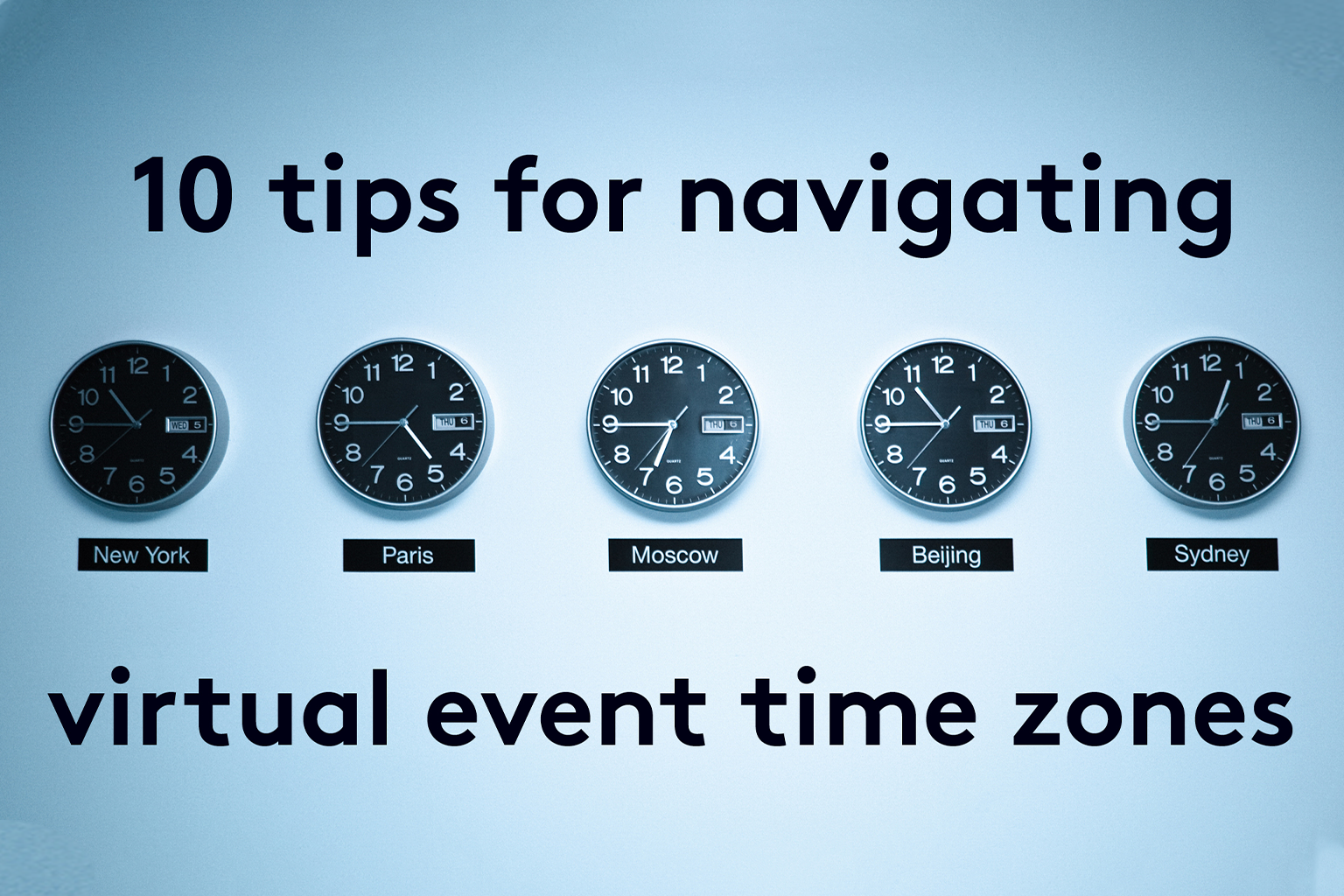10 Tips for Navigating Virtual Event Time Zones
- Collect the time zones of your attendees by surveying them in advance. The key is to do this before selecting a date, sharing the details, or opening your event registration. If you can't do this before going live, you'll need to collect time zones from attendees as they register.
- When collecting an attendee time zone as part of registration, you'll be promoting an event on a specific date or series of dates but not an exact time. You can leave it broad but set expectations by telling prospective attendees how much of their day it will take. For example, you can say a half-day event, or two half-days.
- Host your event in the time zone where the majority of your attendees are. Then create an on-demand service for those who may have missed out on specific sessions because of their time difference.
- If most of your event sessions need to be a live presentation, then it may be worth considering having specific days dedicated to certain time zones during your event.
- Include downloadable calendar invite links for attendees in your registration system and in confirmation emails. Most calendars update based on the person’s local time zone, which does the conversions for them.
- Try not to program time-oriented breaks (i.e., lunch break at 12pm BST or a virtual happy hour at 5pm BST. That's potentially leaving out your audience, not in BST.
- Break up your event into multiple sections that split your audience. That way, if you have attendees with a 6-hour difference, it won't matter so much.
- Anywhere you share an agenda, you should explicitly list times in all relevant time zones for attendees.
- Virtual events should be quite shorter in length than in-person events or, at minimum, be broken up into shorter chunks over a few days. People will not sit in front of their computer and be an engaged audience for 8 hours at a time. This actually helps with navigating time zones because it's much easier to have 3 hours of programming across multiple time zones than 6–8 hours of programming.
- It is also worth considering interpretation within this element too. The live sessions may have had a simultaneous translation, so if you are providing people with an on-demand service who missed the live content, transcribed translation may need to be considered.

We’ve all been there, as global event professionals. The early start, the long flight, the inevitable jet lag as we physically transition from one time zone to the next.
But virtual events present a different set of time zone challenges. When we invite people to meet virtually, we need to consider availability in a very different way and schedule to suit. So how do you start to programme content so that many people in many time zones can attend? Afterall, not many people want to view a keynote presentation after they have stopped work for the day and family and other matters, rightly, take priority. Few will feel like joining networking activities early in the morning or late at night. And, indeed, some activities are better suited to certain times of the day. For that reason, certain types of session are also better placed at different times of the day, regardless of where in the World you are.
Here are our top ten tips:
To learn more about our virtual event services, including the Virt-US Live platform, drop us a line at hello@worldspan.co.uk